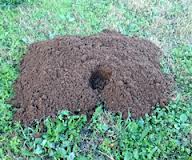Seth Borenstein of the AP Associated Press reported on May 13 2015:
More than 40 percent of bee hives died in the past year.
WASHINGTON — More than two out of five American honeybee colonies died in the past year, and surprisingly the worst die-off was in the summer, according to a federal survey. Since April 2014, beekeepers lost 42.1 percent of their colonies, the second highest loss rate in nine years, according to an annual survey conducted by a bee partnership that includes the U.S. Department of Agriculture.
“What we’re seeing with this bee problem is just a loud signal that there’s some bad things happening with our agro-ecosystems,” said study co-author Keith Delaplane at the University of Georgia. “We just happen to notice it with the honeybee because they are so easy to count.” But it’s not quite as dire as it sounds. That’s because after a colony dies, beekeepers then split their surviving colonies, start new ones, and the numbers go back up again, said Delaplane and study co-author Dennis vanEngelsdorp of the University of Maryland.
What shocked the entomologists is that is the first time they’ve noticed bees dying more in the summer than the winter, said vanEngelsdorp said. The survey found beekeepers lost 27.4 percent of their colonies this summer. That’s up from 19.8 percent the previous summer. Seeing massive colony losses in summer is like seeing “a higher rate of flu deaths in the summer than winter,” vanEngelsdorp said. “You just don’t expect colonies to die at this rate in the summer.” Oklahoma, Illinois, Iowa, Delaware, Maryland, Pennsylvania, Maine and Wisconsin all saw more than 60 percent of their hives die since April 2014, according to the survey.
“Most of the major commercial beekeepers get a dark panicked look in their eyes when they discuss these losses and what it means to their businesses,” said Pennsylvania State University entomology professor Diana Cox-Foster. She wasn’t part of the study, but praised it.
Delaplane and vanEngelsdorp said a combination of mites, poor nutrition and pesticides are to blame for the bee deaths. USDA bee scientist Jeff Pettis said last summer’s large die-off included unusual queen loss and seemed worse in colonies that moved more.
Dick Rogers, chief beekeeper for pesticide-maker Bayer, said the loss figure is “not unusual at all” and said the survey shows an end result of more colonies now than before: 2.74 million hives in 2015, up from 2.64 million in 2014. That doesn’t mean bee health is improving or stable, vanEngelsdorp said. After they lose colonies, beekeepers are splitting their surviving hives to recover their losses, pushing the bees to their limits, Delaplane said.
With this report in mind, it’s critical to see why everyone needs to be aware of and concern about using or manufacturing any product that would be detrimental to the health of the honey bee. As individuals it should be in the forefront of our plans and goals to use only bee friendly products, and as a manufacturer is should be paramount to your goals to produce only bee friendly products.
BGA Industries, the manufacturer of EcoKill (the natural insecticide) had these thoughts incorporated into their goal. They tested their product in the lab and in the field to ensure that it does not harm the honey bee. BGA Industries endeavors to use only natural ingredients in all their products (animal deterrents and insecticides) for the safety of humans, house-hold pets and the environment, but even natural ingredients can be deadly to insects.
The thrust of BGA Industries was to make a natural ingredient insecticide product that would kill most all pest insects, yet would not harm the honey bee. I am happy to report that BGA was successful in their goal; EcoKill does not harm the honey bee, yet it killed over 90% of all the different type insects tested. EcoKill is a bee friendly product.



0 Comments